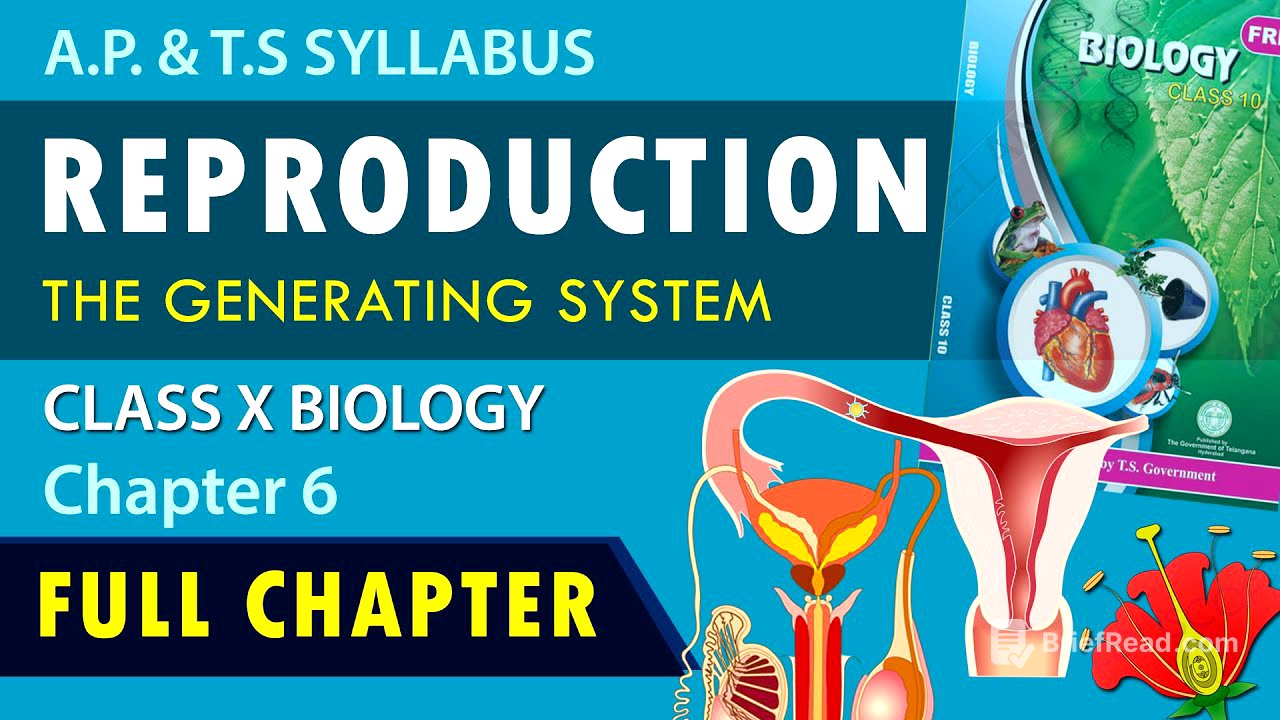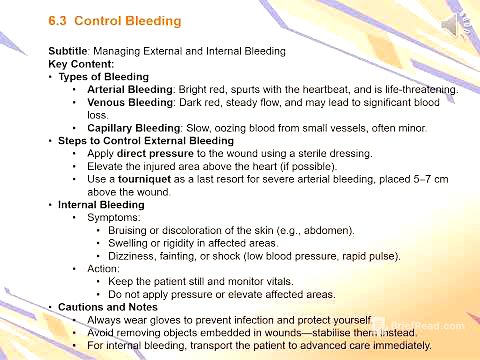TLDR;
This video provides a comprehensive overview of reproduction in organisms, covering both asexual and sexual methods. It explains vegetative propagation in plants, details the male and female reproductive systems in humans, and discusses sexual reproduction in plants. The video also explores cell division, including mitosis and meiosis, and concludes with a discussion on reproductive health and contraception.
- Asexual and sexual reproduction methods are explained.
- Vegetative propagation in plants is detailed.
- Human reproductive systems are described.
- Cell division processes (mitosis and meiosis) are discussed.
- Reproductive health and contraception methods are covered.
Introduction to Reproduction [0:01]
Reproduction is the process by which living organisms produce offspring of their own kind. There are two main types: asexual and sexual reproduction. Asexual reproduction involves a single parent, as seen in organisms like hydra, while sexual reproduction typically involves two parents, as in human beings. The method of reproduction can vary depending on environmental conditions.
Asexual Reproduction Methods [0:20]
Asexual reproduction includes methods like binary fission, common in certain organisms, and parthenogenesis, where young ones develop from unfertilised eggs, resulting in seedless fruits like grapes and watermelons. Regeneration is another form, where body parts can produce new individuals.
Vegetative Propagation in Plants [3:00]
Vegetative propagation involves using plant parts like stems, roots, and leaves to reproduce. This can occur naturally or artificially. Natural methods involve vegetative parts reproducing independently. Artificial methods include cuttings, layering, and grafting, which are used to propagate desired traits, such as combining different mango varieties.
Sexual Reproduction in Humans: An Overview [8:39]
Sexual reproduction in humans involves the fusion of male and female gametes in a process called fertilisation. This can be external, as in frogs, or internal. Human reproductive systems are well-developed, with distinct male and female systems.
Male Reproductive System [9:58]
The male reproductive system includes parts such as the testes, vas deferens, seminal vesicles, prostate gland, and urethra. The seminal vesicles produce seminal fluid, and the ejaculatory duct facilitates the passage of sperm. Sperm production begins around 13 to 14 years of age. Semen, a combination of sperm and plasma, is ejaculated, containing millions of sperm.
Female Reproductive System [15:54]
The female reproductive system includes ovaries, fallopian tubes, and the uterus. Ovaries contain follicles that mature and release eggs. The fallopian tubes transport the egg to the uterus.
Sexual Reproduction in Plants [23:32]
In plants, sexual reproduction involves flowers, which contain both male and female reproductive parts. Flowers can be bisexual or unisexual. Pollination, the transfer of pollen grains, is facilitated by agents like wind, water, insects, and animals. Fertilisation occurs after pollination, leading to the development of seeds.
Cell Division and its Regulation [32:19]
Cell division is highly regulated in multicellular organisms. Some cells divide actively throughout life, while others stop after a certain time. Uncontrolled cell division can lead to conditions like cancer.
Cell Cycle and Mitosis [43:15]
The cell cycle is a series of events that occur as a cell grows and divides, including interphase (G1, S, and G2 phases) and the M phase (mitosis). Mitosis involves phases like prophase, metaphase, anaphase, and telophase, resulting in two daughter cells with the same number of chromosomes as the parent cell.
Meiosis [57:54]
Meiosis is a type of cell division that occurs in reproductive cells, resulting in four daughter cells with half the number of chromosomes as the parent cell. It involves two divisions: meiosis I and meiosis II, each with phases similar to mitosis.
Reproductive Health and Contraception [1:00:44]
Maintaining reproductive health involves adopting healthy practices, such as having sex with life partners only and avoiding sex with unknown or multiple partners. Contraception methods prevent pregnancy by preventing fertilisation, including devices like condoms, diaphragms, pills, and surgical methods.









